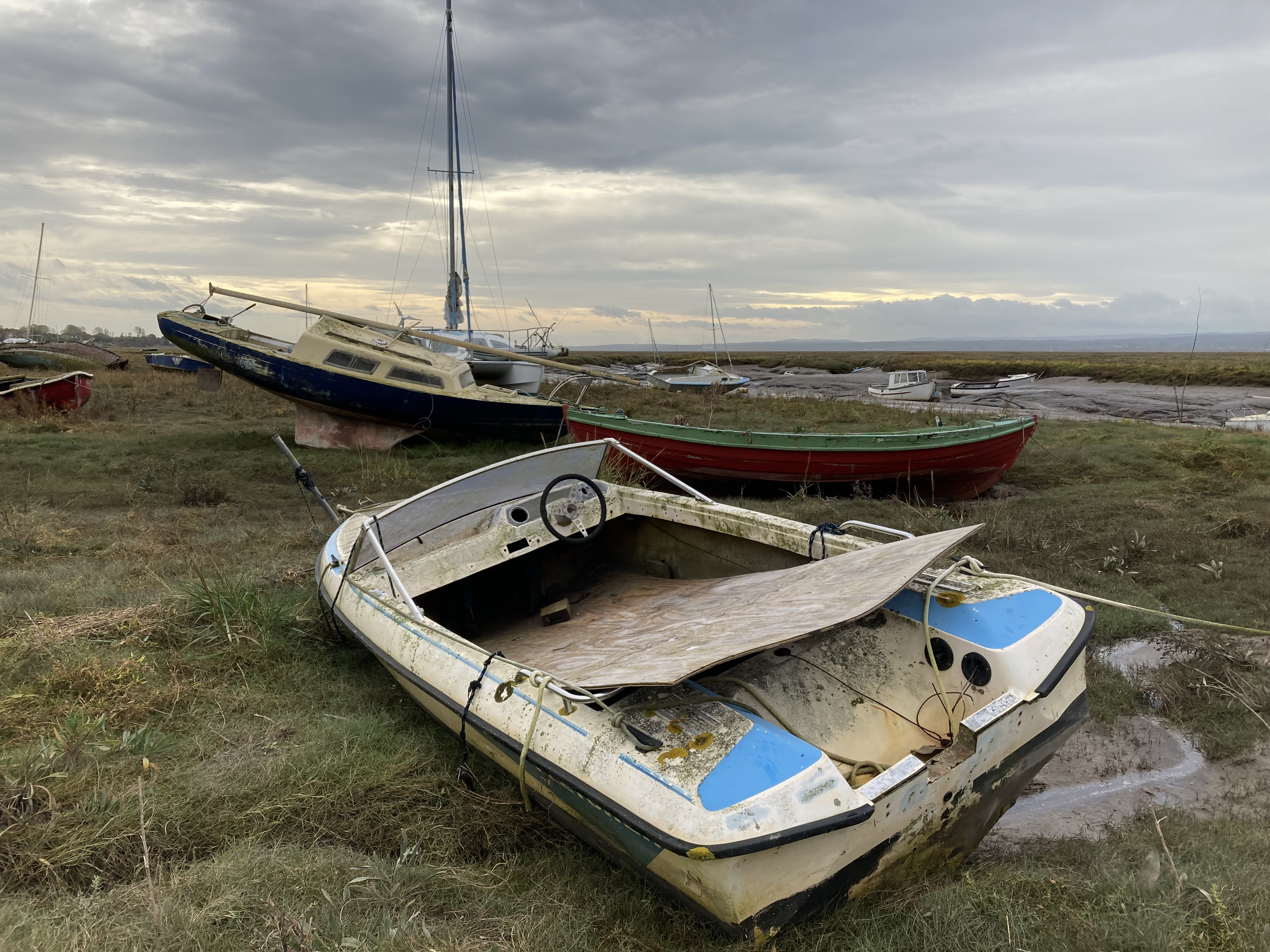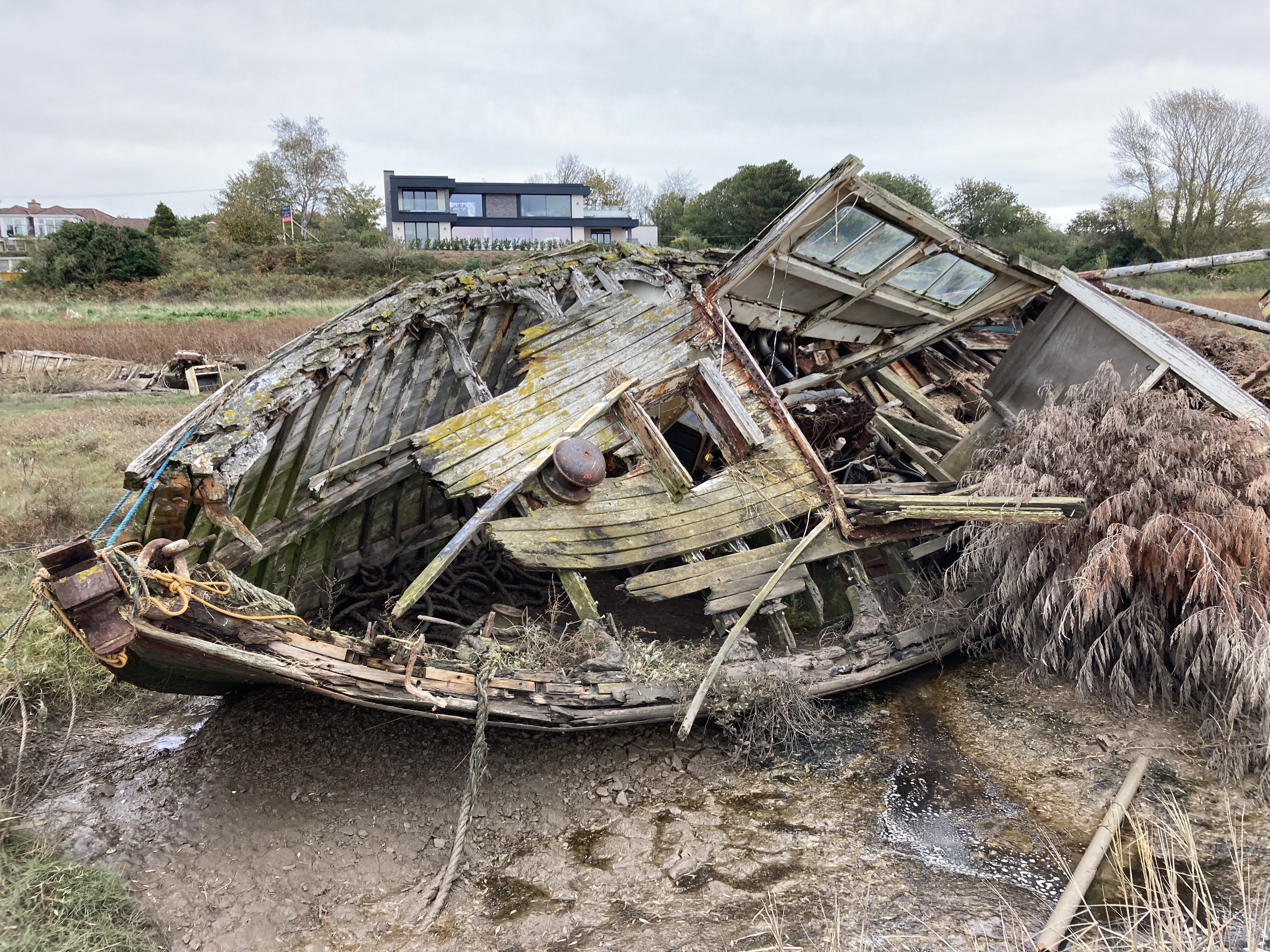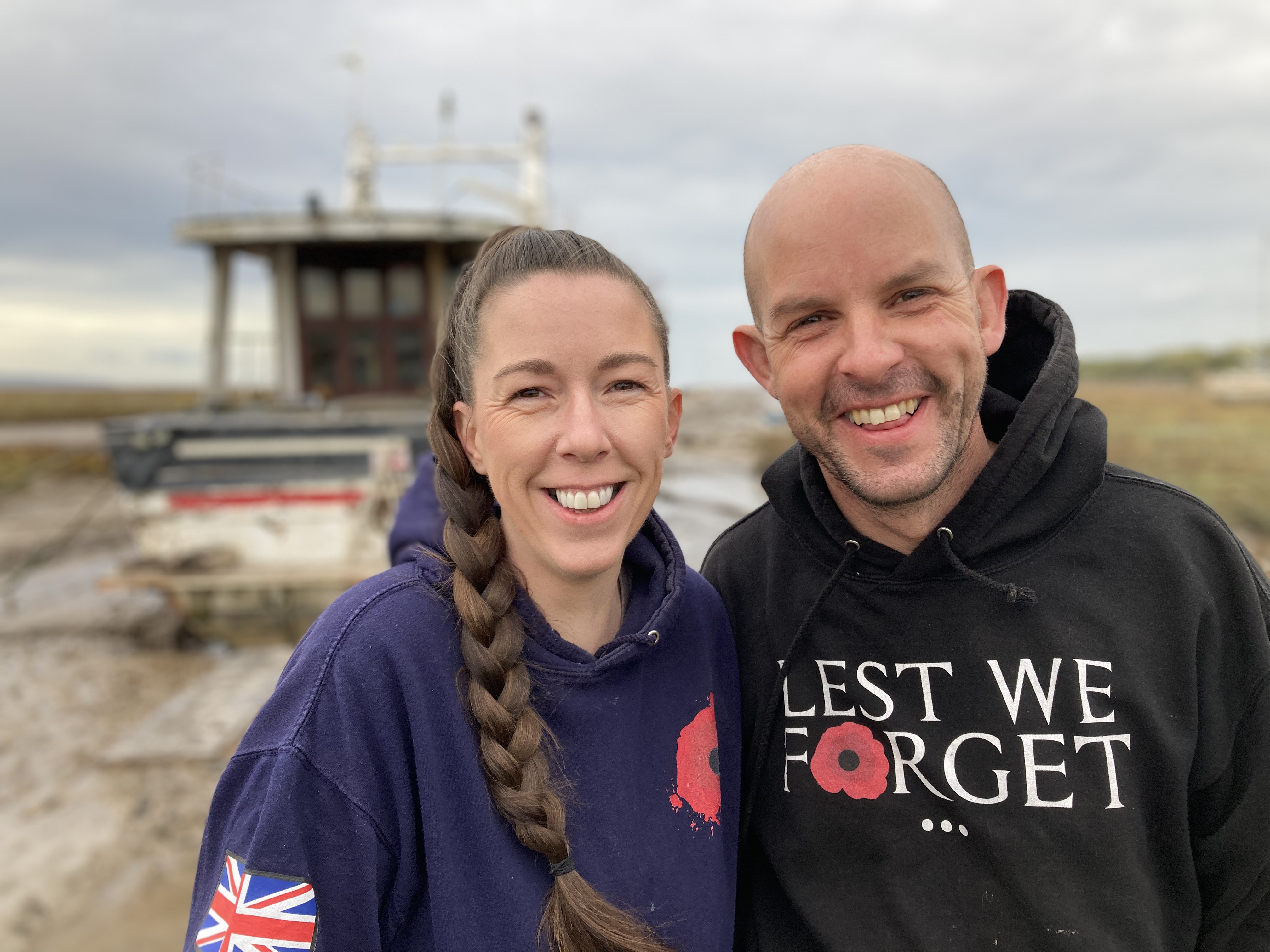Rising from the dead at the Wirral’s boat graveyard

A family resuscitates a WW2 wreck
By Harry Shukman
The order papers that mobilised Dennis Merritt’s boat were marked top secret and stamped in red ink with a curious acronym that said “BIGOT”. Its five letters denoted a high-level security clearance for those coordinating the British Invasion of German-Occupied Territory. The date: 20th May, 1944.
D-Day was less than three weeks away. On that day, Sub-Lieutenant Merritt’s job was to pilot his boat from Portsmouth to coordinates halfway across the English Channel. There his crew would wait, near a similar boat positioned about a mile away, and by their presence signal a safe corridor south that had been swept free of Nazi sea mines so Allied forces could reach Normandy. Churchill’s speech about so much being owed by so many to so few could well have applied to those little boats that briefly formed the vanguard of the army that liberated Western Europe.
Harbour Defence Motor Launch 1392, as Merritt’s vessel was codenamed, had a spectacular war. After D-Day, she captured a Nazi submarine off the Dutch coast, and then in peacetime joined HM’s Customs and Excise agency. She left government service in the sixties and was refitted as the Merseyside pleasure boat Sarinda, before changing into unlovelier hands and ending up, shabby and ruined, on a muddy tidal estuary of the Wirral a few years ago. She seemed destined for two fates, one more degrading than the other: succumbing to the elements or being sold and gutted for scrap metal.

Sarinda is one of 140 bashed-up vessels in this profoundly weird and hauntingly beautiful boat graveyard near the town of Heswall. I became entranced by this place after stumbling onto a YouTube video of a drone zooming over this spot. It reminded me — not that I’ve been — of the Aral Sea in Uzbekistan, which dried up and left a flotilla of ships to rust in the Central Asian desert.
I go to the boat graveyard on a sunless Monday morning, and see wreck after wreck slumped like corpses in the bog, hulls exposed like rib cages, with scraps of rope clinging to them like rotten flesh. The wind makes their masts rattle, making the only sound in this deserted place.
Some of the wrecks have been flipped over and dumped upside-down by storms, others lie askew because their keels have bent or snapped off. This may be a boat graveyard, but it is also where hobbies come to die. Like a cold-case detective, I peer into an abandoned craft called the Aurora and picture an adventurous family spending Saturdays at sea: this is the kettle that must have sung, the frying pan that sizzled, the blankets they huddled under. Everything inside is now broken and mildewed, and I imagine the divorces and deaths that must have stopped boats like this going out into Liverpool Bay.

Many have been vandalised, and one craft — rumour has it a woman lived in it till recently — has had its windows broken and interior trashed. The main cabin is gutted, electrical wiring hangs loose and shards of glass are sprinkled across the floor. Intact is a sign decorated with drawings of butterflies that reads “Home Sweet Home”.
It’s around noon, and I can’t see any activity except at the boatyard. It’s solely run by Steve Aston, a self-described “water baby”, who has worked on the ships here for seven years. He buys and sells vessels for the few sailors who still use Heswall as a free marina. Steve points out pleasure boats from the 1890s that he has saved from ruin by coating their hulls with fibreglass.
How did the boat graveyard — which lies outside the walls of Steve’s enclosure — come into being? He explains that a few owners are responsible. He doesn’t name them, but counts off their possessions: one owner has 12 boats here, another has 20-odd, another more than 30, strewn about the estuary. “They’re hoarders,” he says. One of them comes every six months or so, late at night, to check his boats are still there and leaves, unwilling to sell but clearly uninterested in sailing. It seems like an odd case of multiple hoarding. What must their houses be like?

Steve does what he can with unclaimed boats, purchasing them from non-hoarding owners, and either repairing them himself or selling them to fixer-uppers. When Sarinda arrived on his patch several years ago, ramshackled and rickety, he couldn’t bear to see a craft with such history suffer. So he bought it and put it up for sale, hoping the purchaser would want to repair the boat instead of rip out its valuable parts and flog them. And this is the point where Heswall starts to look a bit brighter.
One night in January 2021, Simon Robins was lying in bed next to his wife, Gemma, scrolling through eBay. There, amid the dinghies and houseboats, was a 72-foot Harbour Defence Motor Launch built in 1943 now called the Sarinda. He showed Gemma, who found the sight of this dilapidated relic oddly moving. How tragic that an important relic fell into such a state, she thought. The discussion didn’t take long: they agreed to buy the boat for £6,500 and make her shipshape again.
“It was a heart over head decision,” Gemma says from the cabin of their boat, lodged in the bog at low tide. She drives over most days from Wrexham to work on Sarinda. Her kids Mason and Emilia pitch in on weekends, when they can be persuaded. When I visit, theirs is the only boat bearing any signs of life, and it’s a relief to climb aboard.

I step up a ladder on the stern, pull off my muddy wellies. Gemma hands me a pair of Simon’s Crocs before I come into the warm. They show me into the pilothouse, which is covered with pleasingly retro radar equipment, analogue dials and a wooden wheel, which isn’t an antique but liberated, so they’ve been told, by a previous owner from the set of the 1992 film Howards End. Out the windows, mud stretches off into the distance, all the way to Hilbre Island. It looks much more beautiful out of the wind.
We go down into the hull, where Gemma and Simon are currently replacing each wooden plank and copper nail. It’s like a real-life example of the ancient Greek philosophy problem known as the Ship of Theseus: if you replace every part of a boat, one piece at a time, will it still be the same boat? Or is it something else entirely? After two thousand years, we have an answer: something else, but probably only because Gemma and Simon aren’t planning any amphibious landings.
Gemma describes the repair work as a fiendish game of chess. The back roof can’t be replaced before the deck, which can’t be replaced before the hull. It’s tiring work, but they are encouraged by their legions of fans, who follow them on YouTube. Their channel –– Ship Happens –– has a sizeable audience of nearly 70,000 people, some of whom donate money to buy building materials. “The support we have had from people all over the world has been mind-blowing,” says Gemma.

It wasn’t always like this, she adds. “In the beginning, a lot of people expected to see a car crash.” In their first video, the couple didn’t think to announce their DIY credentials: both are ambitious, professional repair workers. Their main jobs are souping up and selling camper vans - Simon has the Guinness World Record for the fastest motorhome (141.3mph). But as they didn’t mention any of that, many of their initial viewers laid into them for seeming like clueless idiots. “The abuse was appalling,” says Simon. “We’ve got thicker skin now.”
Their followers — who swiftly had to revise their expectations — are now keen to support the repair project. Some travel to stay on the boat and work on the hull. Care packages are always showing up, many of them unsolicited. This is how dedicated their audience is: someone gifted them a giant box of Quavers just for a bird. Around 1pm every day, Gemma and Simon are visited by a friendly gull they nicknamed Wonky, who they once nursed back to health when it had a crooked wing. Uninterested in their sardines, the bird instead stuck his beak into an open packet of Quavers. He has since developed “an obsession”, says Gemma, which has only worsened since a follower couriered a box of the crisps to the boat for him.

It will probably take seven more years before Sarinda is ready again for a life at sea, just in time for the 85th anniversary or D-Day. The memory of Dennis Merritt looms large over the project — what would have been his 103rd birthday was on October 24th. Once they finish, Gemma and Simon hope that were he still alive, he would recognise his boat, except for the absence of guns.
They are also heartened by the other repairers who come to the graveyard to tinker with their craft on the weekends, in the hope of bringing them back to life, and the swallows and wagtails who have started nesting in the wrecks. The abandoned boats around them are tethered to the ground with long guy-ropes, and as I walk past them to leave, they start to look less like they’re protecting walkers from dangerous ruins and more like stanchions in a gallery protecting priceless works of art.
Want another lovely read from The Post? Try “The watcher of Hilbre Island”, by Jack Dulhanty. “Looking out over sparkling waters, grey seals and ancient ruins, Chris Williams finds a connection with nature - and with his father.”
An earlier version of this article referred to Heswall as a village, when it is in fact a town.

Comments
Latest
The mystery invoice and an expensive law firm: The Eldonian saga comes to court
Waiting for the killer hornets
Their bosses read their WhatsApps. Then their jobs were on the line
Southport attack: Could Axel Rudakubana have been stopped?
Rising from the dead at the Wirral’s boat graveyard
A family resuscitates a WW2 wreck